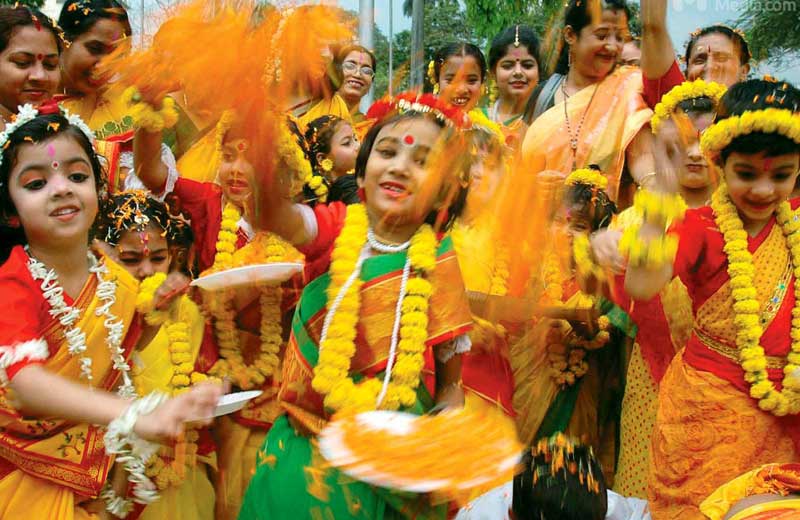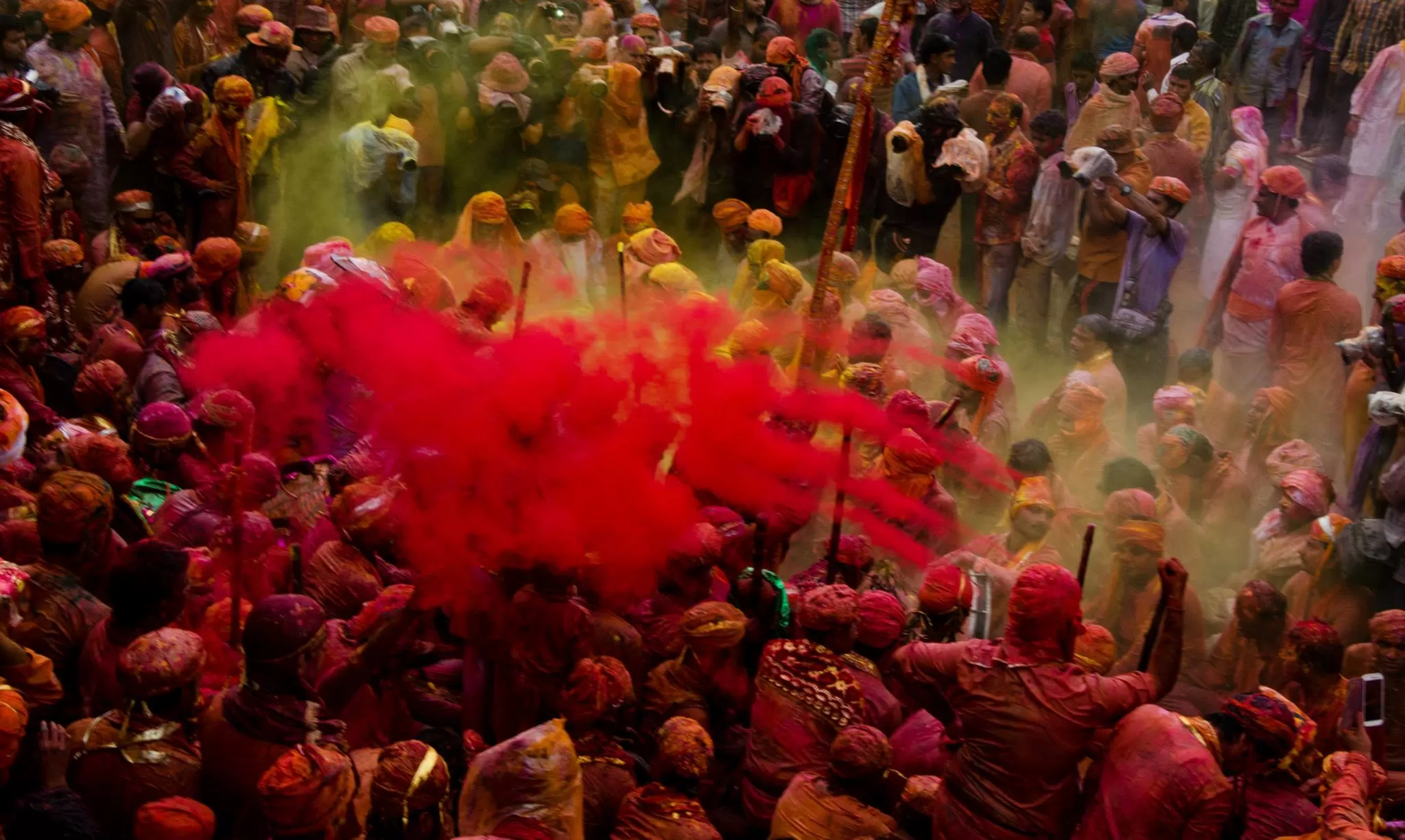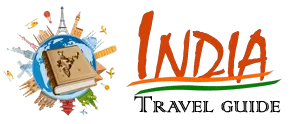As the cold days of winter bid a goodbye, colours of spring peep in. The fresh tiny green leaves dangling from the trees mark the beginning of an altogether different season. It is the time when farmers plant new harvest and the air gets filled with the fragrant of the bloodshot ‘Palash’ (Butea monosperma) flowers.
The blooming of Palash marks the festival of colours, Holi which is joyfully celebrated in different parts of the Indian subcontinent and abroad. The diverse colours of the festival indeed symbolize brotherhood and harmony among the natives whose diversity has been always a distinguishing mark of the country.
‘Dol-Yatra’, ‘Falgun-Poornima’ and ‘Dol’ are some of the synonyms of Holi. The festival is celebrated yearly on every ‘Falguni Poornima’ ie. On full moon night in the month of Falgun (generally falls between last week of February and last week of March).
Earlier the colour used in the festival was dusted from natural ingredients like Neem, Haldi and Kumkum. The powdered outcome was termed as Gulal and it acted as a shield to seasonal ailments like cough and cold. But nowadays most of the colours available in the market are based on chemicals and therefore are not as effective as the Gulal. Nevertheless, there are many parts in India where people still play Holi with Gulal.
Holi in legends
The festival dates back to a period when the Demon Hiranyakashipu ruled the planet. After attaining boon from Lord Brahma, he declared himself as the only Lord of the universe. His son Prahlad was an ardent devotee of Lord Vishnu and thus denied his father’s divinity.
Out of rage and anger, Hiranyakashipu asked his sister Holika to kill Prahlad while sitting on a pyre. Holika possessed a superpower owing to which she remained unaffected in flames. She tricked Prahlad and made him sit with her on the pyre.
As soon as the fire was set, Lord Vishnu appeared and Prahlad made out of the fire safely while Holika was burnt to death. The next day everyone welcomed Prahlad with colours and festivities that celebrated ‘Holika Dahan’ (‘Dahan’ refers to burning).
Holi celebrates the victory of noble over the evil, the good over the bad. Many places in India still have the tradition of Holika Dahan on the evening before the full moon. They construct a small figure of a lady (who represents Holika) using dry leaves and then burn it down after the sunset thus symbolizing the beginning of the festival.
Another legend says that once Lord Shiva was in deep meditation for a long time and Goddess Parvati wanted him to come back to the real world. She called upon the Love God, Kamdev who along with his mistress Rati aimed an arrow to the meditating Shiva. All of a sudden, Lord Shiva opened his third eye and Kamdev was meltdown to ashes. Upon losing her husband, Rati asked for forgiveness and worshipped Shiva to bring back her husband to life. Shiva bestowed mercy on Kamdev and his day of return marked the festival of Holi.
This festival also adorns the past time of Radha and Krishna in Vrindavan where the festival even continues for a month.
Below mentioned are the five places where you can enjoy your next Holi, either solo or with your family:
- Shantiniketan, West Bengal

Shantiniketan or Bolpur celebrates Holi much as ‘Vasant Utsav’ or the Festival of Spring. Once the home of the celebrated Nobel laureate Rabindranath Tagore, Shantiniketan has its own way to celebrate Holi.
At this town, the festival gets a varied tint of Bengali culture and tradition and of course, colours. Students from Biswa Bharati University perform a variety of cultural programs that continue till mid-day. Commoners both men and women, while dressed in lovely attires sing and dance to rejoice the season.
While in Bolpur, yellow takes the foremost seat among the other colours. As soon as the program ends, the official festival of ‘Dol’ begins. Only powdered colours and not dyed water is used during the jubilee.
Artists and craftsman from local hamlets also gather here to display their artwork and talent. Besides, fairs, bonfires, and tribal performances are held at various places in the town during Holi. Travellers from all around the globe flock here to get immersed in the culture of Bengal that blooms to its fullest during ‘Vasant Utsav’.
- Vrindavan, Uttar Pradesh

Vrindavan plays what you call a riot of colours! The festival there continues for a month and the streets get drenched in colours. Both in dusted and watered dyes, this holy town in Mathura get immersed in all shades of colours.
Vrindavan hosts more than 5000 temples and each of them has their own unique way of playing with colours.
Holi is mainly celebrated here glorifying the past times of Radha and Krishna. The deities are dressed exquisitely and people sing and dance to the folklore praising the duo.
Buckets of colours and oodles of Gulals are splashed from the temple balconies to the visitors during the festival. Colour pichkaris and ballons are only a trifle thing in Vrindavan and people here get drenched in heaps of colours.
Devotees play a special ‘Phulon wali Holi’ where the commoners are showered with tons of multi-coloured flowers. Holika Dahan is also organized in the evening at several temples a day before the Holi.
Another not to miss is the widow-Holi played by the widows who reside in different ashrams of Vrindavan. The widows were earlier banned from playing Holi but recently this convention has been broken and they enjoy it to their fullest.
- Barsana, Uttar Pradesh

This small village at a distance of 40 kilometres from Vrindavan is another den for playing Holi.
The village is famous for their ‘Lath Mar Holi’ where the local women chase and beat the men with long bamboo sticks called ‘Lath’ or Lathi. The legend dates back to the time of Krishna when he visited Barsana from Nandgaon and playfully agitated Radha and her friends. Hearing this, the women of Barsana chased him with a stick and kept him away from Radha and her pals. Following this tradition, women of Barsana till date greet the men from Nandgaon with sticks.
This event occurs a day before Holi. During this time, men from Nandgaon come to Barsana to play Lathmar Holi while the next day men from Barsana go to Nandgaon to play the same. On both the day, men and women together splash each other with gallons of colours and sing Holi songs together.
Thousands of tourists gather here to spectacle the mass of men being toiled by women. Barsana is the birthplace of Srimati Radha and the hilltop temple dedicated to her gets stippled with all shades of Holi colours.
Traditional sweets like Peda and Gujiya are distributed at the end of the day to rejoice the festival. A beverage called ‘Bhaang’ (milk blended with cannabis) is also distributed along with the sweets. Relishing this festival at Barsana is indeed a lifetime experience for those who want to get a tang of the true spirit of cultural India.
- Anandpur Sahib, Punjab

The Sikhs celebrate one of their major festivals during Holi which they refer as ‘Hola Mohalla’ or simply ‘Hola’.
The legend goes back to the era of Sikh’s 10th Guru, Guru Govind Singh who started the tradition of military exercises and mock battles in Lohagarh Fort. This was initiated with a purpose to train the Sikh militants to defend their state from foreign invasions.
Later this tradition passed on to Anandpur Sahib and Kartarpur Sahib where every year the Sikhs gather in masses to pay tribute to their 10th Guru by showcasing their spirit and valour through soldierly callisthenics and mock battles.
The ‘Nihang Singhs’ is the chief military members of the Sikh army that was founded by Guru Govind Singh. Till date, they carry on their martial tradition and swordsmanship along with other military acts. The three-day-long festivity comprises of colourful processions, mock battles, music and poetry competitions. Daring acts like ‘Gatka Fighting’, tent pegging, mock encounters, and bare-back horse riding are also performed during this fiesta. ‘Langars’ or free food stalls are set up during this time to serve the visitors coming from far and near to spectacle the spirit and heroism of the Sikhs.
- Udaipur, Rajasthan

If you want to have a royal taste of colours, come to Udaipur! Udaipur has always been known for its enchanting lakeside palaces and royal courtyards.
The festival here gathers an entirely new cosmos as the royal families participate in the carnival too. The fete starts with Mewar Holika Dahan, the evening before the full moon night by burning the idol of Holika in the premises of City Palace. The present royals of the family grace the occasion which is followed by a grand rally where the regal members also take part.
Giant elephants and camels with elegant decorations walk through the long assembly along with the commoners who dress up beautifully in Rajasthani attires. The rich and luxurious rally ends with a gala dinner where the evening’s celebration ends with fireworks.
Stage shows with dance performances presenting the pass times of Radha and Krishna are also organized which is yet another charm of the evening. The next day is a normal Holi day like other places where anyone splashes colour on everyone to rejoice the festival.
Apart from the above places, you can also spend your Holi in places like Manipur, Hampi, Delhi, Bangalore, and Mumbai where the festival is celebrated with much zeal and vigour. Along with traditional and folk performances, live DJs and karaoke lit up the colourful evening of the fiesta.







